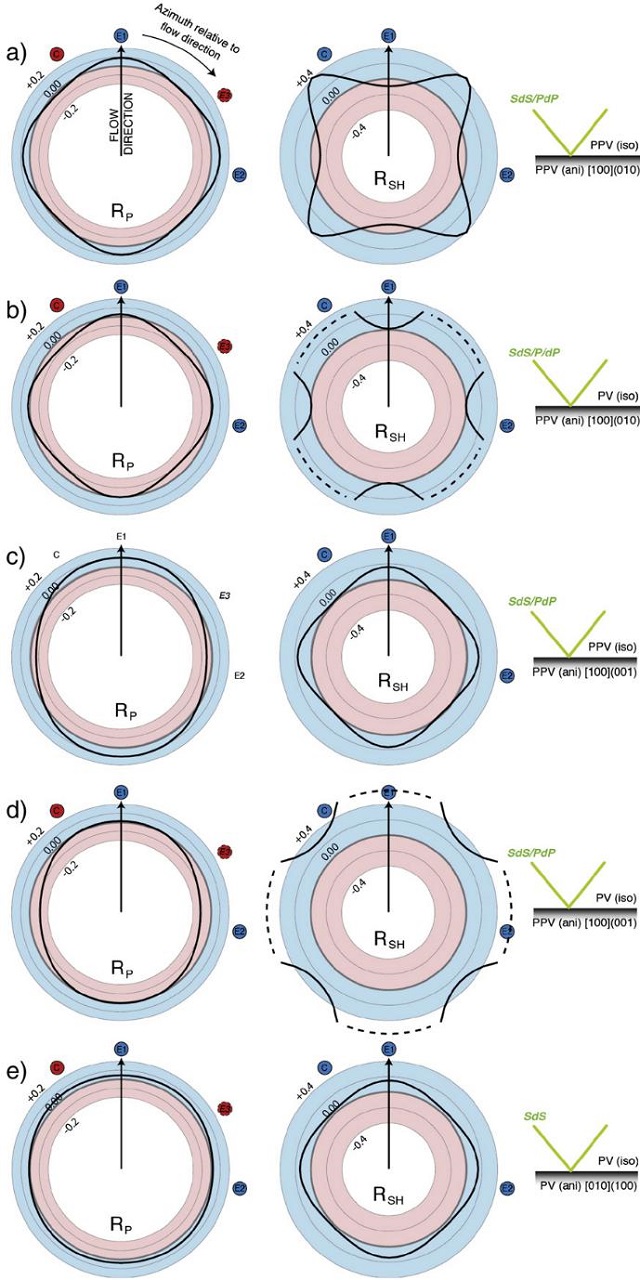D" anisotropy
As part of the CREEP project, at the Institut für Geophysik in Münster we use seismology to probe anisotropy and deformation in the D" region (the lowest few hundred kilometers of the Earth’s mantle, figure 1).
This region seems to have a fundamental role in the geodynamics of our planet. Global tomographic image, at those depth, show fast and slow regions which have been associated to descending of slabs and uprising of plumes, as depicted in the cartoon of figure 1. These structures are most likely associated at flow in the deep mantle and probing seismic anisotropy could help us to understand the mantle rheology and dynamics. Moreover, a phase transition from perovskite (bridgmanite) to post-perovskite is expected to be the seismic marker of the D" discontinuity. Due to the different rheological behavior of ppv respect to pv, anisotropy in ppv is a good candidate to explain the observed seismic anisotropy in the around the core mantle boundary.

By definition, in anisotropic media the seismic velocity changes with the direction of travelling. If we consider a discontinuity marking the transition from isotropic to anisotropic media, the impedance contrast across such discontinuity could be azimuthal dependent. If we assume such a patter for the D" region, being the reflection coefficient depending on the impedance contrast, we expect to see polarity variation of the reflected phases (PdP and SdS). To investigate seismic anisotropy, we look then at the polarity of waves reflected from the top of the D" (figure 2 and 3).

Due to the small impedance contrast (also depending on the incidence angle on the top of the D’’) the amplitude of the PdP(SdS) phases can be quite small in single station seismograms. This is why we use array methods where we stack the seismograms, recorded at a same array, in order to better focus the energy and increase the signal noise ratio. The output of this procedure is called vespagram (click here for more detailed information on vespa process).
Example of vespagrams showing opposite polarity for the PdP phase (respect to P and PcP) can be found in figure 3, whereas SdS exhibits normal polarity, being the same as the S and ScS.


By azimuthally sampling a given region and using both methods briefly described above, we expect to collect a dataset of seismic anisotropy measurements. This dataset needs to be then compared with anisotropic models for mineral assemblages expected at D" conditions, as LPO in post-perovskite and ferropericlase, for different slip planes, phase proportions, texture and alignment. This could give us precious information on microstructures and rheology at the bottom of the mantle, perhaps helping us to provide the link between micro and macro scales of deforming Earth materials.
Further reading:
- Thomas C, Wookey J, Brodholt J, Fieseler T (2011) Anisotropy as cause for polarity reversals of D′ reflections. Earth and Planetary Science Letters, 307 (3-4), p. 369-376.
- Nowacki, A., Wookey, J., & Kendall, J. M., 2010. Deformation of the lowermost mantle from seismic anisotropy, Nature, 467(7319), 1091–1095.





